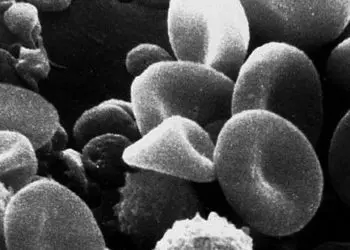eGFR is more strongly associated with adverse outcomes when cystatin C is included
1. In this cohort study, estimated glomerular filtration rate based on both creatinine and cystatin C (eGFRcr-cys ) was more strongly associated with cardiovascular events than estimates based on creatinine alone (eGFRcr).
2. Nearly one-third of individuals were reclassified into a different severity category after recalculation.
Evidence Rating Level: 2 (Good)
Study Rundown: GFR is used to define chronic kidney disease (CKD) and is typically estimated using serum creatinine. However, loss of muscle mass in old age can depress circulating creatinine levels, creating the illusion of better renal function. While some people have proposed lowering the GFR threshold for CKD in response to this finding, others have demonstrated that this potential inaccuracy can simply be minimized by incorporating another filtration marker, cystatin C, into the equation. This population-based cohort study of older adults in Sweden was conducted to evaluate the associations between both versions of eGFR and a broad set of severe adverse outcomes such as hospitalization and mortality. It was found that associations between eGFRcr and outcomes were largely U-shaped, where those with an eGFR in the normal physiological range paradoxically had greater incidence rates of adverse outcomes. However, after reclassification of nearly a third of all individuals based on cystatin C measurements, associations between eGFRcr-cys and outcomes were found to be approximately linear. These associations were also found to be stronger for many outcomes, including acute kidney injury, heart failure, cardiovascular mortality, and all-cause mortality. Strengths of this study were a large sample size and the use of contemporary data; limitations included a lack of actual GFR measurements and a fairly homogenous sample population, making results difficult to generalize to populations with more diverse compositions.
Click here to read the study in AIM
In-Depth [retrospective cohort]: This retrospective, population-based study included 82,154 adults over the age of 65 years who had same-day creatinine and cystatin C measurements in Stockholm, Sweden between 2010 and 2019. Persons with a history of kidney failure with replacement therapy were excluded. During a median follow-up of 3.9 years (IQR, 2.0 to 6.2 years), there were 31,219 deaths and 51,096 new hospitalizations. eGFRcr-cys was more strongly associated with several outcomes than eGFRcr; adjusted hazard ratios for 60 vs. 80 units (mL/min/1.73 m2) for eGFRcr and eGFRcr-cys were 1.0 (95% confidence interval [CI], 0.9 to 1.0) versus 1.2 (CI, 1.1 to 1.3) for all-cause mortality; 1.0 (CI, 0.9 to 1.1) versus 1.3 (CI, 1.2 to 1.4) for cardiovascular mortality; 1.4 (CI, 0.7 to 2.8) versus 2.6 (CI, 1.2 to 5.8) for KFRT; 1.2 (CI, 1.1 to 1.4) versus 1.5 (CI, 1.4 to 1.7) for heart failure; and 1.6 (CI, 1.4 to 1.9) versus 2.3 (CI, 2.0 to 2.6) for AKI. Similar differences were observed when eGFR levels of 30 or 45 vs. 80 units were compared. Absolute incidence rates for all outcomes were higher with lower eGFRcr-cys. Switching from eGFRcr to eGFRcr-cys resulted in the reclassification of 31.2% of all individuals, largely to a more severe GFR category. For instance, 24.0% of persons with eGFRcr between 60 and 89 units were reclassified to 45 to 59 units under eGFRcr-cys, and 33.4% of those with eGFRcr between 30 and 44 units were reclassified to 15 to 29 units using eGFRcr-cys. This effect was greater for persons aged 75 years or older compared to those younger than 75 years. These results suggested that the addition of cystatin C improved the precision of CKD staging and that this combination of biomarkers may provide insight regarding overall health beyond just kidney function.
Image: PD
©2024 2 Minute Medicine, Inc. All rights reserved. No works may be reproduced without expressed written consent from 2 Minute Medicine, Inc. Inquire about licensing here. No article should be construed as medical advice and is not intended as such by the authors or by 2 Minute Medicine, Inc.







